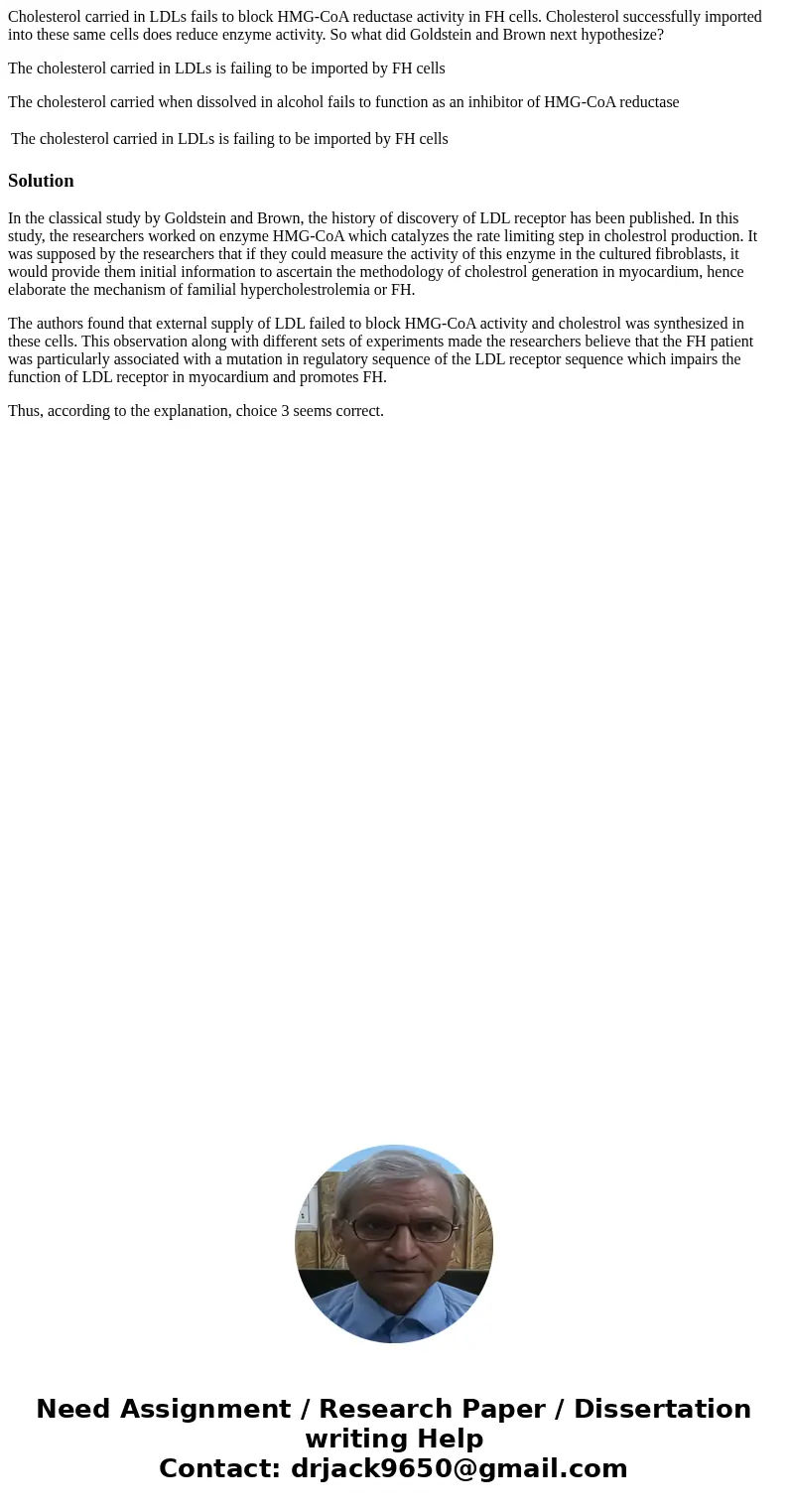Cholesterol carried in LDLs fails to block HMGCoA reductase
Cholesterol carried in LDLs fails to block HMG-CoA reductase activity in FH cells. Cholesterol successfully imported into these same cells does reduce enzyme activity. So what did Goldstein and Brown next hypothesize?
The cholesterol carried in LDLs is failing to be imported by FH cells
The cholesterol carried when dissolved in alcohol fails to function as an inhibitor of HMG-CoA reductase
| The cholesterol carried in LDLs is failing to be imported by FH cells |
Solution
In the classical study by Goldstein and Brown, the history of discovery of LDL receptor has been published. In this study, the researchers worked on enzyme HMG-CoA which catalyzes the rate limiting step in cholestrol production. It was supposed by the researchers that if they could measure the activity of this enzyme in the cultured fibroblasts, it would provide them initial information to ascertain the methodology of cholestrol generation in myocardium, hence elaborate the mechanism of familial hypercholestrolemia or FH.
The authors found that external supply of LDL failed to block HMG-CoA activity and cholestrol was synthesized in these cells. This observation along with different sets of experiments made the researchers believe that the FH patient was particularly associated with a mutation in regulatory sequence of the LDL receptor sequence which impairs the function of LDL receptor in myocardium and promotes FH.
Thus, according to the explanation, choice 3 seems correct.

 Homework Sourse
Homework Sourse